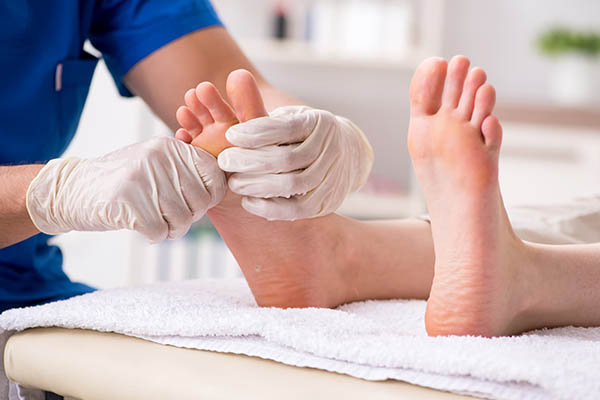
Foot Care
DIABETIC FOOT CLINIC

DIABETIC FOOT CLINIC
The Hyderabad Diabetes Centre Foot Care Program can help manage foot problems you may develop. It offers access to a multidisciplinary team that cares for the entire spectrum of diabetic foot disease. Care ranges from advice on prevention for people who have never had foot problems to surgical solutions for those with advanced foot disease
- Nerve Damage
- Blood Vessel Damage
- Ulcers
- Infections that result in Tissue Damage
- Bone and Joint Damage, or Gangrene
The Diabetic Foot Clinic provides multidisciplinary foot care for patients with acute diabetic foot problems:
- Diabetic foot ulcers
- Charcot osteoarthropathy
- Painful neuropathies
- Ulcer debridement and wound dressing
- Total contact casting.
The team includes a consultant diabetologist, podiatrists and nurses. There is also input into the clinic from orthotists and a joint clinic with orthopaedic and vascular consultants. We are committed to providing the best quality care and to furthering the understanding of the diabetic foot, through clinical research.
Causes of Diabetic Foot
Diabetes has many complications like complications related to eyes, heart, kidneys etc. But the most common and threatening complication is a DIABETIC FOOT. The maximum number of hospital admissions in diabetics are due to foot problems and not because of heart and kidney ailments.
- Uncontrolled blood
- sugar levels
- Vasculopathy
- Peripheral neuropathy
Complications in Diabetic Foot
An ulcer is a break in the skin that penetrates to deeper layers. If the ulcer is not treated properly, or if circulation is impaired, it may not heal. Continued walking on the foot further prevents the ulcer from healing. The ulcer can become infected and progress to the point where it threatens the foot or leg. Changes in the bones, ligaments and joints of the foot can also occur in people with diabetes, and may result in collapse of the foot.
Do’s
- Wash your feet daily. Dry carefully between the toes.
- Apply a moisturizer to feet lightly after bathing. It is important for you to keep your skin soft and supple.
- Do not cut toenails too short. The corners of the nails should always be visible. If you have difficulty reaching or seeing your feet have someone else cut your toenails.
- Stop smoking. Smoking reduces blood circulation and increases your risk of amputation.
- Wear comfortable, well-fitting shoes.
- Examine feet every day for cuts, blisters, dry blood, redness or swelling. Call your podiatrist immediately if you notice a problem. Hours can make the difference between saving your foot and losing it.
- Inspect the inside of shoes for foreign objects.
Don’ts
- Never use hot water bottles or heating pads. These can cause serious burns.
- Don’t walk barefoot, even indoors.
- Don’t trim corns or calluses with any type of blade. An emery board can be used safely if necessary.
- Don’t use corn removal pads, liquids or wart treatments. These products contain acids that can cause an ulcer or hole in the skin.
- Don’t wear open-toed shoes, particularly sandals with thongs between toes.

